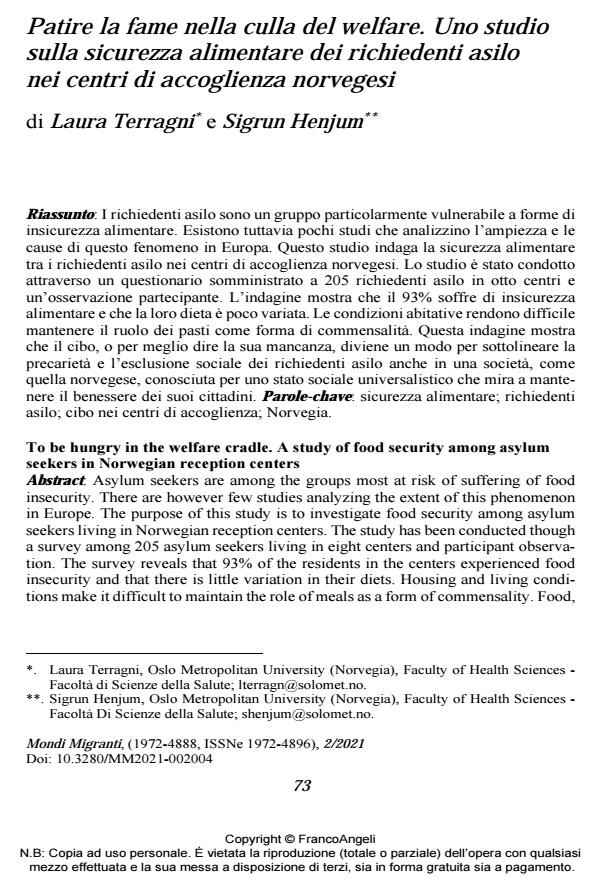To be hungry in the welfare cradle. A study of food security among asylum seekers in Norwegian reception centers
Journal title MONDI MIGRANTI
Author/s Laura Terragni, Sigrun Henjum
Publishing Year 2021 Issue 2021/2
Language Italian Pages 16 P. 73-88 File size 179 KB
DOI 10.3280/MM2021-002004
DOI is like a bar code for intellectual property: to have more infomation
click here
Below, you can see the article first page
If you want to buy this article in PDF format, you can do it, following the instructions to buy download credits

FrancoAngeli is member of Publishers International Linking Association, Inc (PILA), a not-for-profit association which run the CrossRef service enabling links to and from online scholarly content.
Asylum seekers are among the groups most at risk of suffering of food insecurity. There are however few studies analyzing the extent of this phenomenon in Europe. The purpose of this study is to investigate food security among asylum seekers liv-ing in Norwegian reception centers. The study has been conducted though a survey among 205 asylum seekers living in eight centers and participant observation. The survey reveals that 93% of the residents in the centers experienced food insecurity and that there is little variation in their diets. Housing and living conditions make it difficult to maintain the role of meals as a form of commensality. Food, or better the lack of it, thus becomes a way to underline asylum seekers’ precariousness and social exclusion even in a country known for its universalistic welfare and wealth of its citizens.
Keywords: food security; asylum seekers; food in reception centers; Norway.
Laura Terragni, Sigrun Henjum, Patire la fame nella culla del welfare. Uno studio sulla sicurezza alimentare dei richiedenti asilo nei centri di accoglienza norvegesi in "MONDI MIGRANTI" 2/2021, pp 73-88, DOI: 10.3280/MM2021-002004